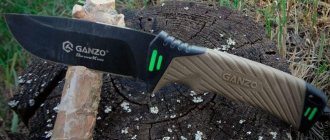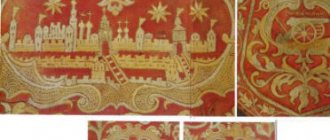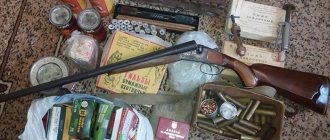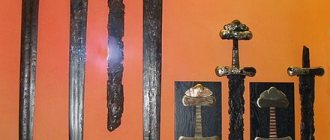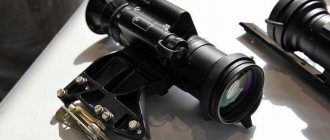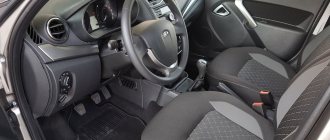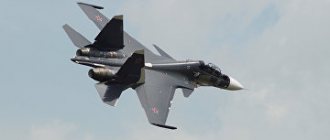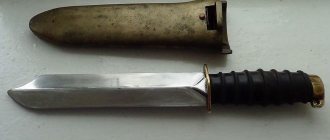L
It’s almost impossible to do without a durable knife on a hike. You can use it to perform a variety of tasks: peel fruits and vegetables, open canned food, cut food, cut ropes, etc. According to experts, it is advisable for a traveler to have at least three such accessories with him: main, instrumental and auxiliary. A folding one wouldn't hurt either.
Are camping knives bladed weapons?
There is an opinion that tourist knives are edged weapons. Is it so? Not really. There is a GOST that clearly defines the characteristics of which knife is a bladed weapon and which is not. The certificate for a product usually indicates which category this attribute belongs to. If there is no certificate (for example, a knife was bought secondhand or made independently), then you need to clearly know the difference between a skinning or tourist knife and a combat one. For example, the law allows a knife blade length of 9 cm. If the thickness of the blade is more than 5-6 mm, then it is also not prohibited. Models where the blades are switchable and fixed are automatically classified as edged weapons.
Popular top five
The leaders in the production of hunting knives are Japan, Finland, and the USA.
The peculiarity of their products is that the sharpness of the blades does not lose over time. Although Russia does not occupy the first three places in the ranking, it represents professional products that are appreciated by hunters all over the world. Among the wide variety, there are several examples of hunting knives of the best quality. They have virtually no disadvantages and are widespread not only in Russia, but also in other countries of the world.
Finnish Puukko
Very similar to the “Russian Finka”, but does not have a crossguard and is not a combat weapon. Has Scandinavian origin. Hunters love it for its convenient configuration and versatility. It has a straight blade shape with a length of 120-160 mm, the thickness of the butt is from 3 to 5 mm. The blade and handle are attached in a mounted manner. It has virtually no drawbacks.
Author's model 007
It was invented in the workshop of Pampukha I. Yu. It has a classic shape, a wooden handle. The blade is forged by hand. Blade length - 145 mm, butt - 4 mm. Due to the special forging method and sharpening angles, it has excellent quality and good balancing. The only drawback is the high price.
Hunting Yakut
Based on the name, it is clear that it is better to hunt in the taiga with such a weapon. Blacksmiths smelt steel using their own secret ancient technology. Therefore, it is better to buy an original forged knife in Yakutia. The blade is not wide, pointed, with an asymmetrical sharpening. The butt is rectangular. The handle is made from a piece of birch and impregnated with oils. Advantages: versatility, convenience, simplicity. Disadvantages - the difficulty of purchasing an original product.
Military group
A type of army knives that belong to the universal type. General characteristics of the group's products:
- blade shape - clip - point;
- butt thickness - 3 mm and above;
- length - more than 150 mm.
They are chosen for sufficient reliability, convenience, and brutal appearance.
The disadvantages are:
- impossibility of cutting small carcasses;
- Some models require permission because they are prohibited edged weapons.
Classic examples of the “Fink NKVD”, NR-40, and “Vityaz” are widely used.
Buck 110BRS
The branded folding knife comes with a lifetime warranty. Product length - 220 mm, blade - 95 mm. Can be used as a cutting agent when processing game, as well as for kitchen needs. Advantages: versatility, reliability, compactness. Disadvantages: short blade length.
How to Choose the Best Camping Knife
In order to choose the most suitable knife, you need to clearly know what it will be used for on a hike. For a hunter or fisherman, there is more than enough work for knives. They may have an ax, a knife, or a whole set of them in their backpack. Many people carry folding knives in their pockets. An ordinary tourist on a hike may never get such an accessory.
What are camping knives used for? They are needed to:
- Cut food for lunch.
- If you don't have a saw, you can use a large knife to chop wood chips to start a fire. Inexpensive models are quite suitable for this procedure.
- If the ax handle breaks, you can use a camp knife to cut it out.
- If you manage to catch fish, this accessory will be useful for cleaning it. In this case, the quality of the blade does not matter; even a Chinese multifunctional model or a dull kitchen knife will do.
- A camp can opener will help you open cans.
For a beginner, a simple knife with a blade length of about 15 cm and steel 65x13 or 95x18 is quite enough for this work.
An important quality for camping knives is the simplicity of their design and “indestructibility.” With a knife, you may have to dig the ground and open cans, so it must have a fairly thick and strong blade. The quality of steel does not play a special role. It is desirable that the handle be all-metal with pads.
The main factors that influence the choice of camping knives
The choice of a knife for tourism is influenced by a number of factors, including functionality, design features, shape and size of the blade, handle and materials from which its components are made.
A good knife should have a simple design, with the required components: a blade, a handle and a sheath (sheath).
Structurally, a knife can be: folding or non-folding (which is divided into: collapsible or non-collapsible). Each type has its own advantages and disadvantages. For example, if we consider a folding tourist knife, it is inferior in strength to a non-folding non-folding knife (which is considered the best and most reliable), but it is light and compact, and for traveling this is the biggest advantage. A camping folding knife can consist of several blades at once, which provide the necessary versatility, one of which will cut a branch, and the other will open a can of canned food.
Which knife to choose - folding or non-folding?
Despite the many advantages of fixed blade knives, folding models benefit from their light weight and compactness. In addition, many of these attributes are also multifunctional (include a whole set of tools).
If a hunter needs a serious knife to cut prey, and a fisherman needs a thin and long fillet knife, then the traveler can get by with an ordinary folding blade.
When purchasing a folding knife, it is important to consider the following nuances:
- The folding structure is not as reliable as the fixed one, so all power work must be done carefully. And they won’t be able to chop wood for the fire.
- The blade of folding knives may not be fixed and, if handled carelessly, may fold directly onto the fingers.
- It should be understood that for the compactness of the knife you have to pay for the small size of the blade. Boiled sausage or bread will have to be cut into circles.
- The mechanism of folding models is quite sensitive to dirt. After a hike, camping folding knives should be thoroughly cleaned and rinsed with water. If it is heavily soiled, it may even be necessary to disassemble and lubricate the hinges.
You cannot use the handle of a folding knife to crush anything or crack nuts. Even a high-quality and expensive model will not last even one season after such work.
It is better to choose either multifunctional knives or ones with a lock that rigidly secures the blade. It is better to immediately refuse to purchase one-piece models without fixation.
Main features of utility knives
The best survival knives are developed by order of the most combat-ready armies of the world for their special forces units, which, by the nature of their tasks, must operate in various extreme climatic conditions. Universal survival knives are distinguished by their fairly large size, high strength of their main elements, powerful blade and wide spine.
Characteristics
The weight and size parameters of universal survival-oriented knives were selected from the point of view of their maximum optimization. First of all, this was reflected in the characteristics of the blade. A knife with a thin blade can easily break, and one that is too thick cannot cope with painstaking work. The optimal blade thickness is considered to be at least 4 mm, but not more than 6.5 mm. In terms of blade length, its limits can range from 9 to 15 cm.
The cutting properties of specialized survival knives are determined by the type of cutting edge on its blade. It comes in two types - smooth or sawtooth. In the latter case, the serrator (sawing working edge) not only cuts synthetic materials well, allows you to saw wood, bone and even soft metals, but is also effective in self-defense.
Design
The design of a survival knife focuses on the strength of its critical components. At the same time, the knife should not be overly massive, which is achieved, first of all, by using relatively light materials in its handle.
In terms of safety for using a utility knife, a design in which there is a limiter between the blade and the handle is considered successful. The presence of finger grooves on the handle ensures a comfortable hold of this tool.
An important design breakthrough is considered to be the creation of a cavity in the knife handle, where it became possible to place the required minimum of vital items in conditions protected from external influences. A capsule with such an “emergency supply” usually contains matches (about five on average), soaked in wax, and a grater for them.
Some samples of survival knives include about 20 items in their “emergency kit”, allowing you to perform up to three dozen different operations
Functional
The strong tip of the blade must withstand very significant loads, since breaking it can deprive the knife of a wide range of different piercing functions. The handle of a utility knife is designed to provide the properties of a mini-hammer, capable of hammering nails, cracking nuts, flattening soft metals, etc.
In addition to matches, an option for igniting a fire may be to include a magnesium-silicon pencil or a gasoline lighter in the utility knife kit. The instrumental functionality of a universal knife, as a rule, is expanded due to various additional equipment of an “emergency capsule”, which can accommodate half a razor blade or a special scalpel blade, nylon and cotton thread, fishing line with a sinker and hooks. Often, a survival knife is equipped with surgical and regular needles, threaded with a special thread, a sharpening stone, mini-tweezers, a water purification tablet and other elements.
The issue of having a compass in a survival knife is considered controversial. Considering that the handle of such a knife must be made of non-magnetic metal, a magnetic means for orientation placed inside is not the best solution. In addition, if necessary, hitting with this part of the knife will no longer be possible without negative consequences.
Sharpening camp knives
Sharpening of any blade must be done at a certain angle, depending on the tasks that the knife will perform on a hike. For example, for skinning or cutting fish, the optimal sharpening angle is 10-15 degrees. If you plan to cut soft materials and food, choose an angle of 15-20 degrees. A utility knife can be sharpened at an angle of 20-25 degrees. If you need to chop wood chips and open cans, the sharpening angle can be 40 degrees.
The sharpening procedure itself is quite simple. They start with coarse-grained stones, then gradually move on to smoother ones. After sharpening, it is recommended to grind the cutting edge on the leather.
Using sharpening you can solve the following problems:
- Restore the shape of the cutting edge (or change it to the desired angle).
- Sand the edge to the required smoothness.
To sharpen a knife blade to the required degree, the blade should be held while sharpening.
Types of hunting knives and their varieties
Types of hunting knives are determined by purpose, manufacturing method, design, so the products are:
- classic;
- universal (this concept is conditional, since there is no ideal tool for hunting);
- folding or fixed blade;
- forged or rolled steel;
- cutting or intended for more delicate work;
- with a dagger blade or one-sided sharpening.
It is impossible to say which type of hunting knives is better, since each has pros and cons in specific circumstances.
Watch the video about testing different types of hunting knives:
Classical
A classic hunting knife has the following features:
- cutting part length 100-130 mm;
- medium width blade;
- butt 2.6 mm or slightly more;
- blade of any type, but with one-sided sharpening.
It is almost ideal for cutting up carcasses. One of the subtypes of the weapon is the skinner, which has a hook on the butt for skinning.
Universal
A universal knife is one that is suitable for most operations necessary during hunting, that is, having:
- blade up to 130 mm;
- one-sided blade sharpening;
- straight butt;
- handle that does not slip from moisture (with grooves or made of wood);
- pronounced head of the cutting.
It can be used to cut meat, use it for household needs in the forest, cut rope, etc. Essentially, this is a type of classic tool.
Universal hunting knife Columbia USA
Folding
A folding knife for hunting is different:
- the presence of one or more blades in addition to the main one (awl, screwdriver, saw, etc.);
- a massive handle, since you need to hide the cutting part in it;
- by a flip-out opening method or semi-automatic, mechanical.
The type of blade can be anything, but a good folding knife for hunting and fishing should:
- firmly fixed in working condition;
- have serrated sharpening on part of the blade for cleaning fish.
If the blade swings, it is likely that it will fold at the wrong moment and injure the owner of the product. A high-quality tool can be used for fine work when cutting meat.
Cutting
The cutting hunting knife has the following parameters:
- blade 200-300 mm long;
- butt beveled down;
- slightly curved or straight blade.
It is equally important that the handle is made of a material that does not allow the hand to slip due to moisture or cold. Examples of such products: Jaeger, Pecheneg, Polar Bear, Zubr-5, Taipan
Dagger
A dagger can be useful when hunting to finish off an animal with one blow, but to do this you need to know where to stab and have great physical strength. It's also good for collection. But for cutting up a carcass, skinning, and performing other work that may be necessary in the forest, this type of tool is inconvenient. The double-sided blade of the dagger is traumatic; it can stab, but not cut. Moreover, a dagger is not suitable for actions that require accuracy.
Forged knife
A forged knife means that the product is made of high quality steel, therefore it differs:
- high strength;
- the accuracy of the parameters corresponding to the type of tool, that is, the slopes, the angle of the tip, will be exactly as they should be;
- a thin blade, provided it is sharpened correctly, which remains that way for a long time;
- external attractiveness.
Usually these are not the largest products with a blade of 135-160 mm, and they can be with a flat, lowered spine line or clip-point type. Prominent representatives: Lord, MT 103 and MT 106 from Vorsma, Rook.
Knife handle
Many different materials are used to make handles for camping knives. Conventionally, they are divided into two groups:
- Natural.
- Artificial origin.
The most commonly used natural materials are leather, wood, horn, bone or various combinations thereof.
Of the artificial types of material, rubber and various plastics are most often used.
The choice of knife handle depends only on personal preference. Thus, the rubber model is able to provide good grip even in high humidity conditions. Horn and bone are durable and have a pleasant aesthetic appearance. Wood and leather also have a beautiful finish and provide good grip, but they need to be maintained to ensure they don't deteriorate. Plastic is not afraid of water and is durable. You should not take knives with a metal handle on a hike, as it will freeze your hand in winter.
You should choose a knife handle not by appearance and beauty, but by shape and size. It should fit the hand and fit comfortably in the hand. Also, with prolonged use, it should not become worn.
Lanyard
As another useful tip, I recommend attaching a lanyard to the knife. A lanyard is a strap or cord on the handle of a knife. Most often, a very long and strong cord woven into a small loop. Firstly, by putting the loop on your hand, you will never lose the knife, and secondly, if necessary, the cord can be unraveled and used for any purpose, from drying clothes to making snares. That's it, a lanyard is simply irreplaceable on hikes!
Knife with lanyard
Steel selection
There are many types of steel for making knives. You shouldn't choose expensive metal for a camping knife. It is better to opt for stainless steel or carbon steel. Stainless steel knives can resist corrosion, but the blade becomes dull very quickly, and it is quite difficult to sharpen such a tool in field conditions. Models made of carbon steel, on the contrary, quickly rust, but do not become dull for a long time, and they can be easily sharpened.
A set of non-stick cookware for camping
This set is simply irreplaceable for travelers: an aluminum kettle with a handle, a 3-liter saucepan, a non-stick frying pan, a fork, a spoon, a knife, 2 cups, a lid (suitable for both the saucepan and the frying pan) and a mesh bag with a carabiner.
All items are made of stainless steel or aluminum, they are durable, but at the same time lightweight. The set will undoubtedly suit all those who love active recreation.
Price: US $27.56
View product
Multifunctional folding knives
A folding multifunctional tool for hiking is a great addition to your main knife. Conventionally, such models can be divided into 2 groups:
- High-quality multi-subject courses are “Lazerman” and “Victorinox”.
- Inexpensive Russian or Chinese set of camping knives with a fork, spoon, blade and corkscrew.
Knives of the first category have many functions and are light in weight.
Attributes of the second category cannot replace full-fledged cutlery, but they are compact and can be used for their intended purpose.
Choosing a camping knife is a rather responsible procedure. Buy the option that can do most of the work, and not the one that will hang on your belt as a useless weight.
How to properly clean the product?
A folding hunting knife needs constant care, and not just when problems arise with it. If you do not periodically clean the weapon, a lot of dirt can accumulate in the mechanism, which will simply disable it. It is better to clean the mechanism using special solvents.
When polishing a blade with special pastes, be very careful, since they quite easily get into all accessible places, from which it will be difficult to remove the paste. After each cleaning of the blade, it must be wiped with white alcohol. This will extend the life of the knife and keep the blade sharp for a longer period of time.
If you do not go hunting very often, then after cleaning the knife you need to lubricate it. What means are best to use for this? Knife experts recommend camellia oil. In addition, gun stores sell special lubricants that retain their properties for quite a long time and perfectly protect the knife from corrosion.
